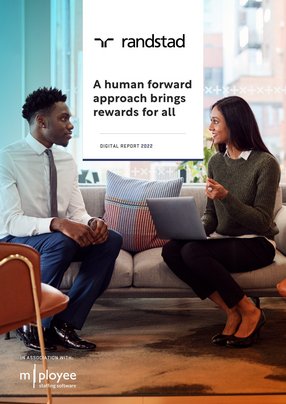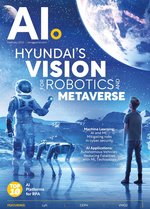Randstad: A human forward approach brings rewards for all
When Abdul Manik, Chief Technology Innovation Officer at Randstad UK&I, joined the company two-and-a-half years ago, he was tasked with helping the recruitment giant to completely transform the front, mid and back office technologies and associated processes.
After his initial observations, speaking to a multitude of people across the business at different levels, he realised that while Randstad UK&I was a very complex business, it was more complex than it needed to be. As Abdul recalls, this “made serving our candidates and clients much harder. Building the relationship was much harder too.”
After a collective discussion as a leadership team, Randstad UK&I looked at how it could simplify the business from all angles, from a change, technology and process perspective. This is how the change programme began; incorporating people, process and products.
The five core pillars of the Randstad digital transformation
Governing Randstad’s digital activities are five core pillars. The first, according to Abdul, is the “client pillar”. It means transforming the whole customer engagement from top to bottom; transforming the experience that clients have when they do business with Randstad day-to-day, whether it's a SME client or it's an enterprise client, or it's a new client or an existing client.
“We really wanted to transform the experience they have with us. We also think about the client space, and this is where automation machine learning plays a key role.
The second is the talent pillar. This is all about our candidates. Again, we follow their journey and experience, not just for a transactional event, but also repeat engagement and repeat connection with us as a human resource provider. The UFO project ties in with both the first and second pillars.”
The third pillar is based around the employee: “We do have recruitment consultants who will provide the recruitment, but we also have shared service functions, such as our resource teams, candidate teams or fulfilment teams.
Pillar four is cyber security and pillar five is change.
Abdul also looks at things from a three-dimensional viewpoint, saying “you have products when you're transforming anything or changing anything. It's the product change. If the process changes, people change and it varies in the impact on each other.”
It’s not just digital transformation, but actually a business transformation, according to Abdul: “transformation is also about process transformation and then people/cultural transformation. So change looks at all three angles.”
As Abdul openly admits, change cannot come through just one person. The tech element often proves easy, it’s the change buy-in/adoption/management that’s hard.
Shona Riley is Director of Business Transformation and Continuous Improvement. Shona is extremely hands-on when it comes to working with the business and leadership team to drive initiatives that increase productivity and business performance.
Shona says, “we are combining multiple front offices into one single front office, on multiple brands. What has come out of it so far is that we’re different, but the same. The first challenge was each vertical market, as they have very different needs to the others and very different problems. We actually started the journey with the real users, but when you put any new technology forward, you will hit some change resistance and limiting beliefs. We actually interviewed 60+ consultants throughout the UK to find out what their challenges and their key problems were.”
Shona knew the size of the task at hand. She had to field questions like ‘how do we embrace change as leaders?’ and ‘how do we get behind the change leaders?’ and ‘how are we going to drive it?’
As Shona sees it, change must be communicated through to senior management and to branch management level to drive the change. Starting top-down, taking leadership on the change journey, equipping it with the right tools to support the managers who will drive change.” She adds that “change approach needs to be top down, bottom up and peer to peer.”
Mindset is key for Shona and her team, making sure everybody is ready for the change: “we had a clear communication strategy to ensure we communicated consistently and regularly, we led workshops with the business and ensured we reviewed our processes to ensure they did not conflict with the adoption of the technology and the new changes.”
Underlining the importance of a clear vision, Shona adds “from the beginning of the journey as a business, it is your responsibility to own the requirements and your vision and share that. And the supplier needs to be on the journey with you, so they deeply understand and can support you with the solution because they’re the experts.”
Another question is how the organisation manages that change. Shona has the answer, saying “you have to make change personal, you can't blanket change. That’s very much part of our tech and touch approach. It takes effort from all people involved. The change has to be perceived as a business initiative, not as a project. We work very closely with managers to coach and support them. We mentor them in terms of combating a limiting belief to draw out the benefits to that particular individual on how it's going to help achieve their targets.”
M|ployee the key partner for Randstad
With its roots also in the Netherlands, M|ployee has been a key consultant and enabler with its highly innovative staffing software solutions, the company was a logical fit. As Caryn Barnes, Head of Talent Technology & Innovation, states: “We've been working heavily with M|ployee to develop those technical processes. They're advising us, especially on how to build things. They not only helped Randstad UK get to the launch stage of UFO but they are helping us get into that ‘business as usual’ process. We're developing, creating and producing things every two weeks.”
The partnership came at an important time for Randstad, in terms of utilising many new technologies: “We wouldn't be able to do it without them at the moment, especially as we grow our team.”
It’s clearly a relationship for the foreseeable future, according to Barnes: “M|ployee will be heavily involved with how we're integrating products like smart artificial intelligence (AI) as well. They understand the goal; we want to get to the vision of one place for everything. That's the overall vision for me. We're looking to grow with Salesforce and M|ployee.”
Microservices, machine learning and RPA
Microservices is a fundamental part of Randstad’s digital transformation strategy. As Abdul remarks: “The reason for that is microservices bring everything together. It allows you to integrate legacy, non-legacy and internal and external systems and processes in a much more flexible way. Our core integration engine is all built around microservices and API, bringing our front office, middle office and back office systems together. It brings the multiple front office data input and output together.
Abdul and the team combined used Robotic Process Automation (RPA) as a big driver for legacy system & data integration as well as efficiency improvements. Abdul insists that automation plays a big role alongside machine learning and data intelligence in Randstad UK's digital transformation plan: “we are definitely benefiting from having very experienced, knowledgeable experts in those areas internally, but also working very closely with our partner channel in that space.”
Swimming in a data lake
We need to find a way of aggregating that data into our data lake. So we can then join data from multiple platforms to create meaningful insight and dashboards. We slightly changed our approach now with aggregating the data within the data lake where we can surface them into Tableau, for users to access. We would now ask the question of ‘what problem are you trying to solve & what is your desired outcome?’, so we can make sure that we're providing the right solution rather than just providing more data in the form of a report. So we can make sure that by orchestrating the data, combining it from multiple systems in the data lake, we can drive better behaviours in the SIS, in the business.”
Pandemic accelerates programme
The pandemic has changed the market dynamic for Randstad. While they had a digital transformation plan before the pandemic happened, the pandemic expedited it. Abdul: “It was supposed to be a two to three year programme, but the low period caused by the drop in demand from candidates and clients in 2020 gave us an opportunity to really fast-forward that transformation plan.”
He went on to say the market has moved from being client-led in 2020 and the early part of 2021 (where there were not a lot of jobs available and a lot of candidates available with a lot of follow-up), to now seeing a lot more candidate scarcity and a lot more client demand.
“When we come out the other side and the demand starts to grow, we’re in a much better position to grab the market growth, as we’re a lot more lean and a lot more efficient and agile as an organisation to react to it,” he continued.






